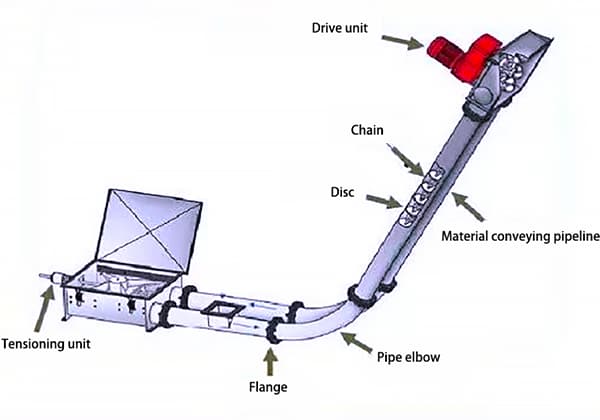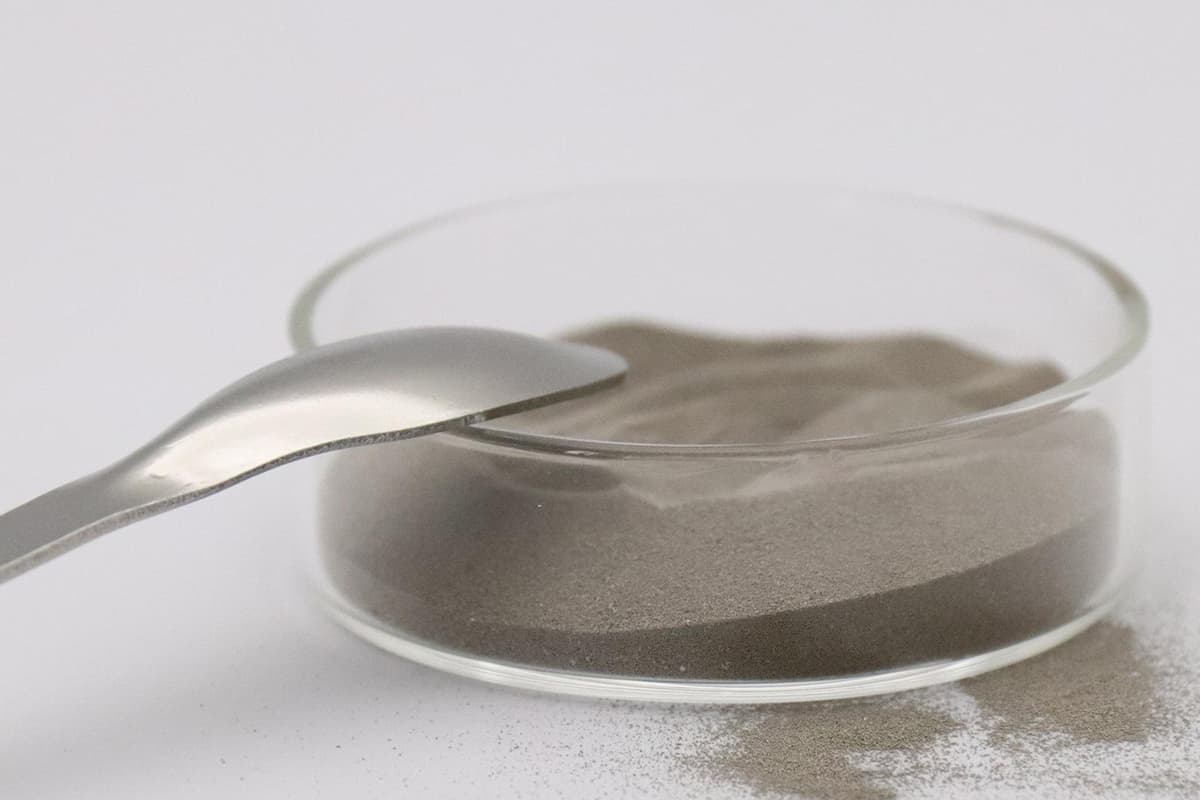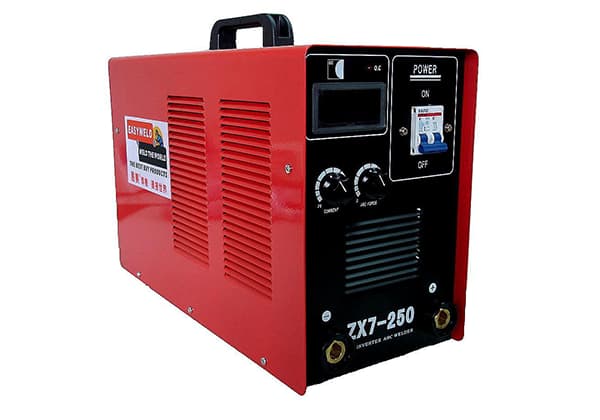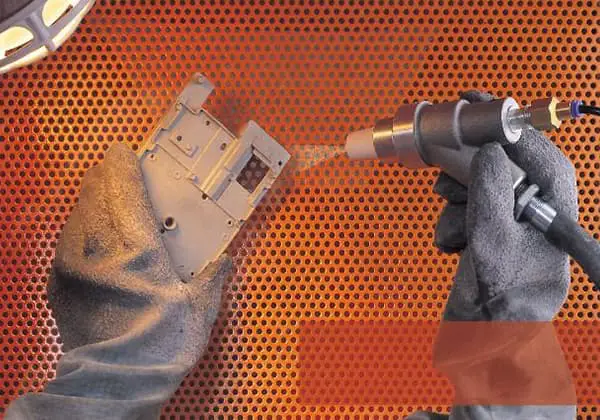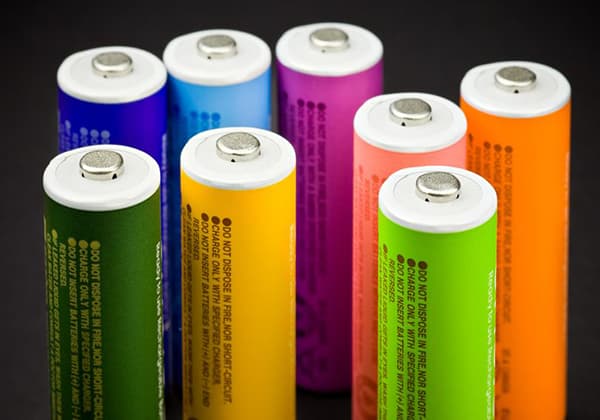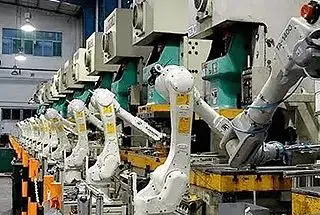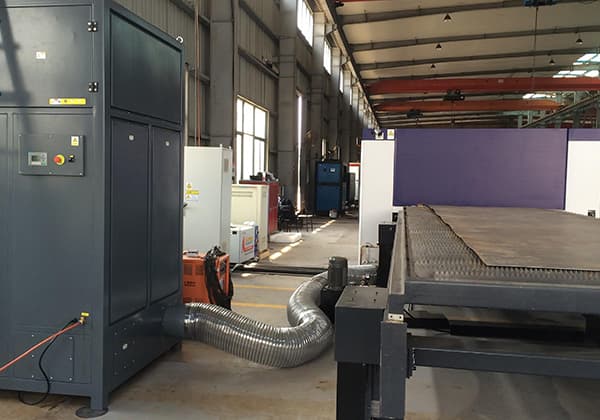
Have you ever considered how vital clean air is in industrial settings? This article explores the mechanics and benefits of dust collectors, featuring insights from seasoned mechanical engineers. Discover how these devices protect workers’ health and improve efficiency, and learn practical tips for selecting the right system for your needs.
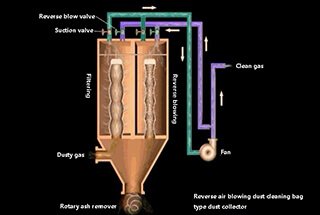
With the development of society, environmental protection has received increasing attention, especially for industries with serious pollution. In recent years, countless factories have been forced to close down due to environmental protection regulations.
Today, we will introduce some working principles of dust collectors. In the future, we will also present practical cases of using PLC to control various dust collectors in factories. Don’t miss out on this valuable information if you need it.
According to the action mechanism, dust collectors can be divided into four categories: mechanical dust collectors, electric dust collectors, filter dust collectors, and washing dust collectors.
Mechanical dust collectors also include gravity dust collectors, inertial force dust collectors, and centrifugal force dust collectors.
According to different installation forms, dust collectors can be divided into vertical and horizontal types.
According to whether liquid is involved in the dust removal process, dust collectors can be divided into dry dust collectors without liquid involvement and wet dust collectors with liquid involvement.
The components of a dust collector include an inlet for introducing dusty gas, a dust removal space for solid gas separation, or a dust removal room, and a dust outlet for removing the separated dust and a relatively clean gas outlet after dust removal.
(1) Capture separation process
① Capture and transition stage: in essence, it is the concentration stage of dust.
Dust, which is evenly mixed or suspended in the carrier medium, enters the dust removal space of the dust collector. Due to the action of external force, the dust is moved to the separation interface. As the dust moves to the separation interface, its concentration increases, making it ready for solid-gas separation.
② Separation phase:
When high-concentration dust flows to the separation interface, there are two action mechanisms:
First, the ability of the carrier medium to carry dust has gradually reached its limit. In the trend of dust suspension and sedimentation, sedimentation is mainly used, and the dust is separated from the carrier medium through dust sedimentation.
Second, in high-concentration dust flow, the trend of dust particle diffusion and agglomeration is mainly agglomeration. The particles can agglomerate with each other or agglomerate and adsorb on the medium interface.
(2) Dust removal process
After passing through the separation interface, the separated dust is discharged through the dust outlet.
(3) Exhaust process
The relatively purified air flow after dust removal is discharged from the exhaust port.
A bag filter is a type of dust removal equipment based on the filtration principle. It uses organic or inorganic fiber filter cloth to filter out dust in the gas.
The structure of a pulse jet dust cleaning bag filter is composed of an upper box, a middle box, a lower box, and a control valve. The dust-containing gas enters the middle box of the bag type dust collector through the air inlet and into the cloth bag from outside the bag.
The dust is blocked on the surface outside the filter bag, and the purified air enters the bag, then enters the upper box from the upper part of the cloth bag, and finally is discharged by the exhaust pipe.
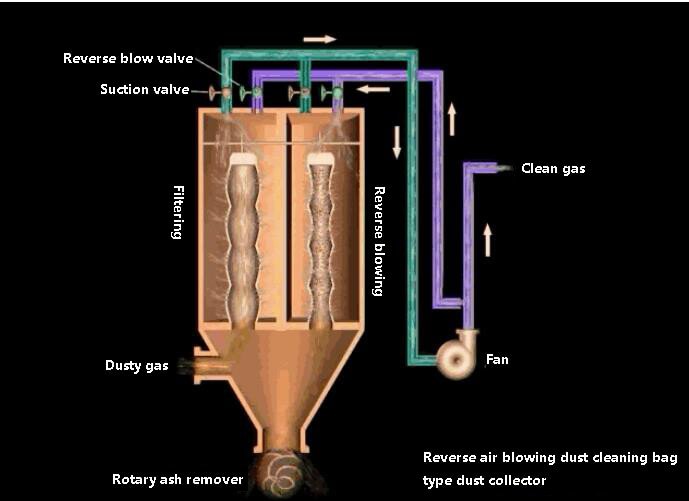
To prevent the filter bag from being sucked and deflated during filtration, a support frame is set in the filter bag. The pulse valve controls the pulse to eject high-speed and high-pressure air flow into the filter bag, causing the filter bag to expand and contract sharply, creating shock and vibration.
Part of the dust attached outside the bag falls into the lower ash bag by gravity, and part of it is blown down by the instantaneous air flow from inside to outside and enters the ash hopper. Finally, it is discharged through the dust discharge valve.
This type of dust collector can clean ash without stopping the air.
It is mainly used to separate particulate and fine dust from industrial waste gas and is widely used in industries such as metallurgy, mining, cement, thermal power plants, building materials, casting, chemical industry, tobacco, asphalt mixers, grain, machining, and boiler dust removal.
The working principle of an electrostatic precipitator air purifier involves using a high-voltage DC electric field to ionize gas molecules in the air, producing a large number of electrons and ions that move to the two poles under the action of electric field force.
As these charged particles move, they encounter dust particles and bacteria in the air flow and charge them. The charged particles move to the polar plate with opposite charges under the action of electric field force. Under the action of the electric field, free ions in the air also move to the two poles.
The higher the voltage and electric field intensity, the faster the movement speed of the ions.
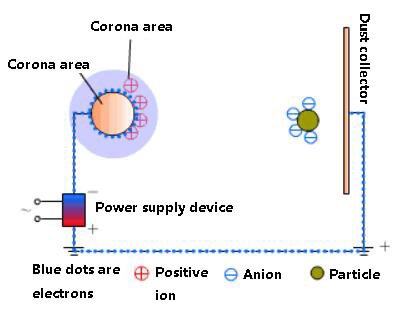
Advantages of electrostatic precipitator:
① High separation efficiency, which can effectively remove particles;
② Large amount of treated gas and low resistance;
③ Suitable for high temperature and corrosive gases;
④ Low operation cost.
Disadvantages:
① High investment cost, huge equipment and large floor area;
② High requirements for equipment manufacturing, installation and maintenance;
③ It is sensitive to the characteristics of dust.
1) Basic types of electrostatic precipitators
An electrostatic precipitator is composed of a precipitator body and a power supply device.
The dust collector body includes a discharge electrode, a dust collection electrode, an air flow distribution device, an ash cleaning mechanism, an insulation device, a shell, and other parts.
① Single zone (stage) electrostatic precipitator
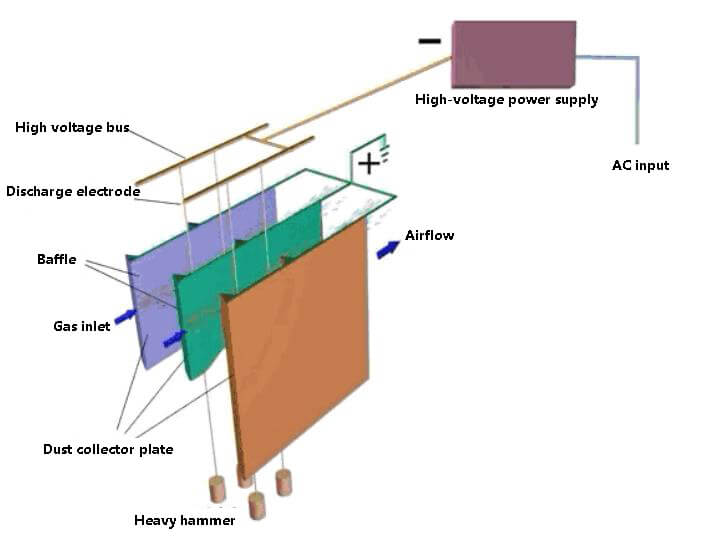
In a single-zone dust collector, the charging and dust collection processes of particles are carried out in the same area, meaning the corona electrode and dust collector are in the same area.
② Double zone (stage) electrostatic precipitator
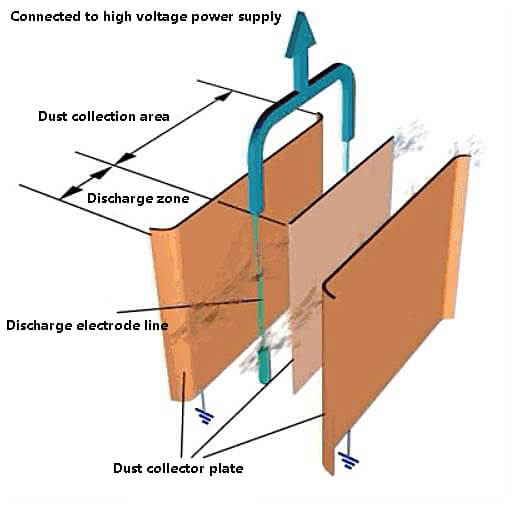
In a double-zone electrostatic precipitator, particle charging and settling dust collection are carried out in two separate areas.
A group of electrodes is installed in the first area to charge the dust particles, and another group of electrodes is installed in the second area to settle and collect the dust particles.
It is mostly used in air conditioning systems.
Mechanical precipitator is a device that uses mechanical force, including gravity, inertia force, and centrifugal force, to separate dust particles from gas.
This type of dust collector mainly includes gravity dust collector, inertial dust collector, and cyclone dust collector.
The mechanical dust removal device is characterized by its simple structure, low cost, convenient use and maintenance, and the ability to handle gas with high particle concentration and large gas volume. It can also adapt to the treatment of high-temperature flue gas.
However, it is generally used for multi-stage dust removal or applications where high dust removal efficiency is not required.
It is also known as a gravity sedimentation chamber.
It is a dust removal equipment that uses the difference in density between dust particles and gas to allow the dust particles to settle and separate naturally from the air flow by the action of gravity.
This is the simplest type of dust removal equipment.

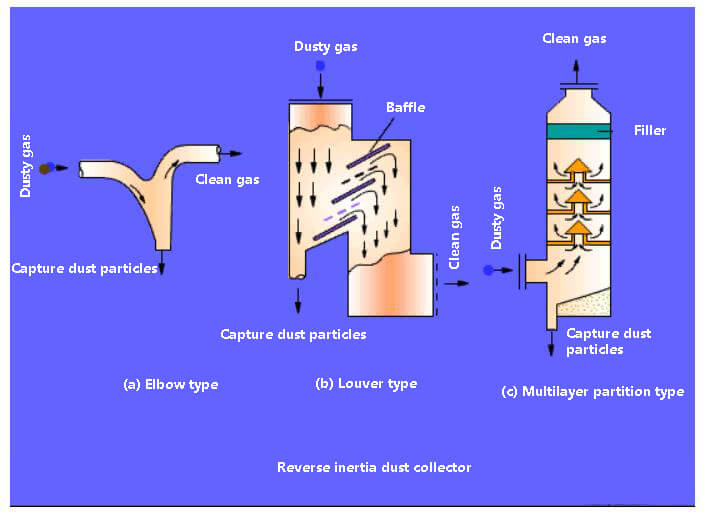
Main features:
The device has a simple structure and low resistance.
Compared to a gravity sedimentation chamber, its dust removal efficiency is higher, but it still falls under the category of a low efficiency dust collector. Generally, it is used for primary dust removal or as the front stage dust removal of a high-efficiency dust collector.
This equipment is suitable for capturing metal or mineral dust with a particle size of more than 10~20µm. However, it is not suitable for cohesive and fibrous dust, as it is prone to blockages.
Due to the explosive nature of dust, there has been an increasing focus on the potential hazards it poses.
As a result, the use of wet dust collectors has also become more prevalent.
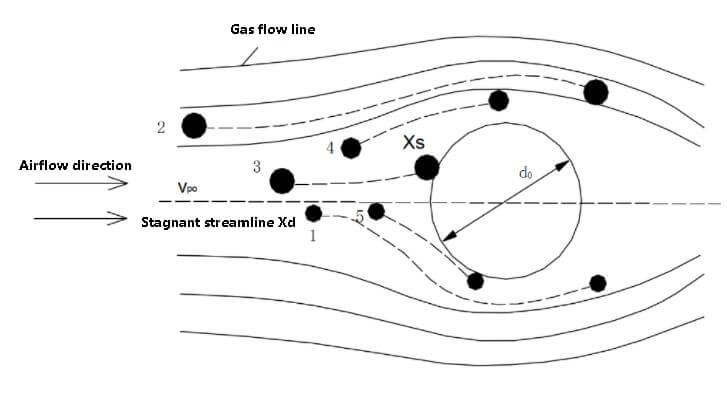
The fundamental principle behind all wet dust collectors is to facilitate the contact and combination of droplets with relatively small dust particles, thereby producing larger particles that are easier to capture.
During this process, dust particles grow in size using various methods, including the combination of larger droplets with dust particles, the absorption of water to increase mass or density, and the formation and growth of condensable particles at lower temperatures in the dust collector.
Wet dust collectors can be categorized based on their structure as follows:
Gravity spray scrubbers are known for their simple structure, low resistance, and ease of operation. However, they have high water consumption, require large equipment and area, and have low dust removal efficiency.
Gravity spray wet dust collectors, such as spray scrubbers, fall into this category.
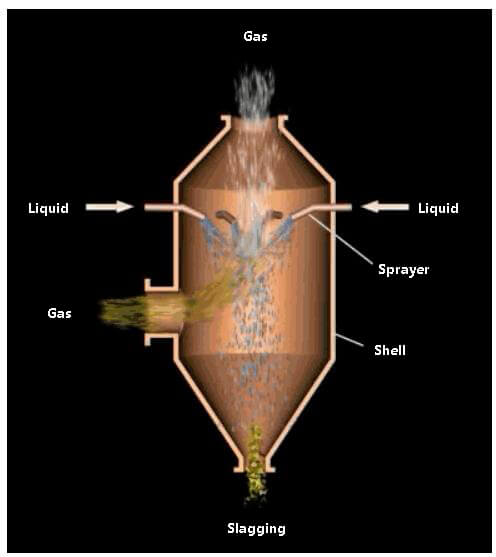
Spray type washing dust collector
The cyclone scrubber is suitable for removing dust particles larger than 5 μm. For the purification of submicron dust, it is often connected in series behind a venturi scrubber to function as a dehydrator for condensed water droplets. The cyclone can also be used to absorb certain gaseous pollutants.
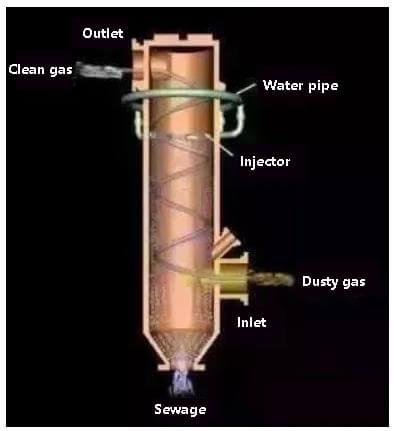
Vertical cyclone water film dust collector
Self-excited dust collectors have the advantages of a compact structure, small footprint, ease of construction and installation, good load adaptability, and low water consumption.
However, they are relatively expensive and can have high pressure loss.
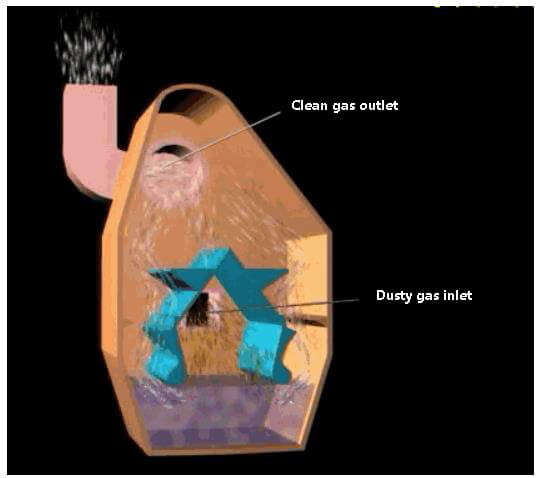
Self excited wet dust collector
Packed wet dust collector, such as packed tower and turbulent ball tower.
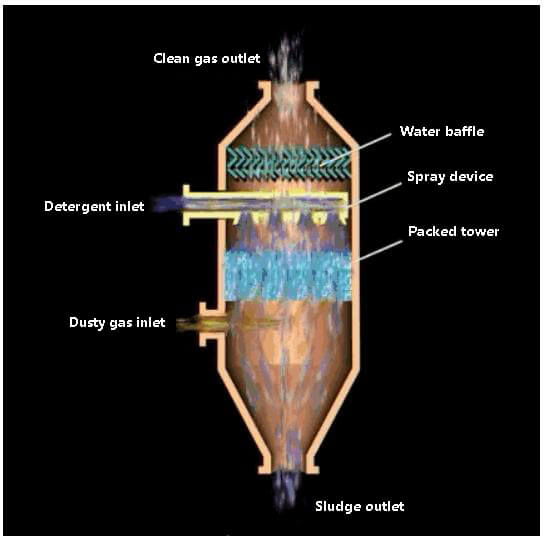
Packed tower
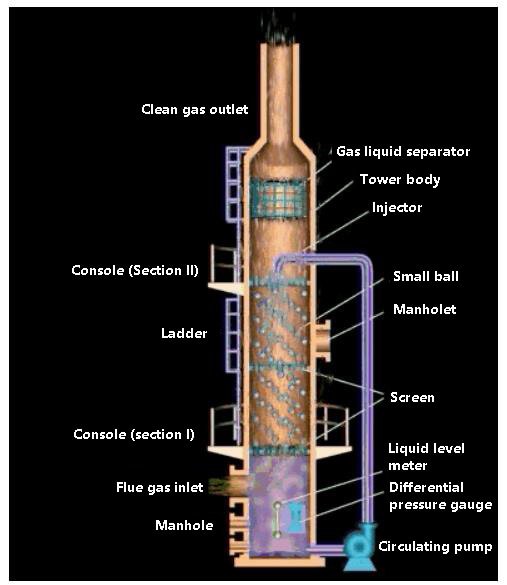
Turbulent ball tower
Foam wet dust remover, such as foam precipitator and cyclone dust trap.
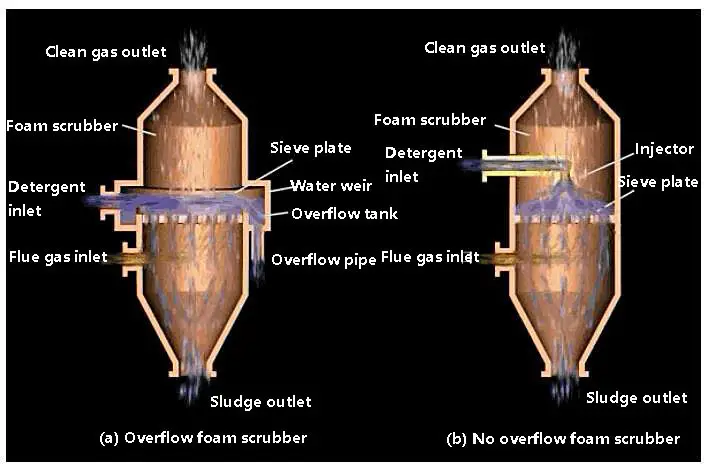
Foam washing dust remover
The venturi scrubber is known for its high dust removal efficiency for fine dust and its ability to cool high-temperature gas.
As a result, it is frequently employed for cooling and dust removal of high-temperature flue gas, such as that generated by iron-making blast furnaces and steel-making electric furnaces. It is also used for the purification of various furnace flue gases in nonferrous smelting and chemical production.
The venturi scrubber has the advantages of a simple structure, small size, flexible layout, low investment cost, but it can result in large pressure loss.
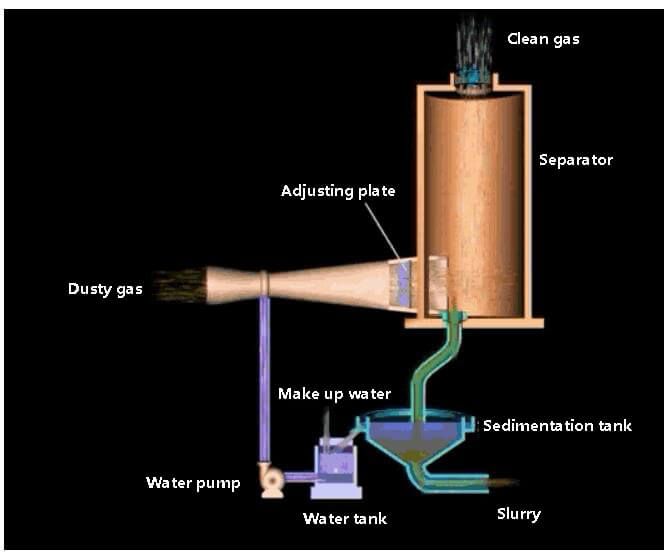
Venturi scrubber

